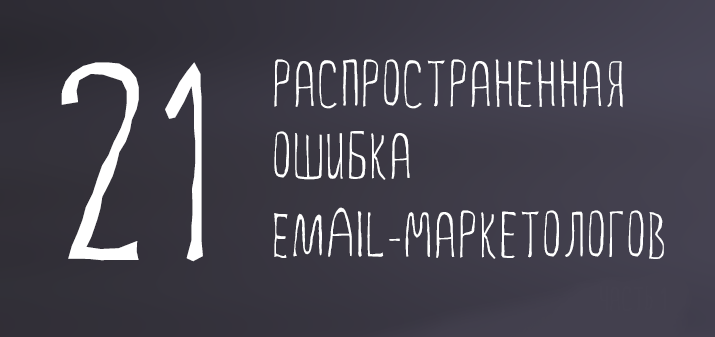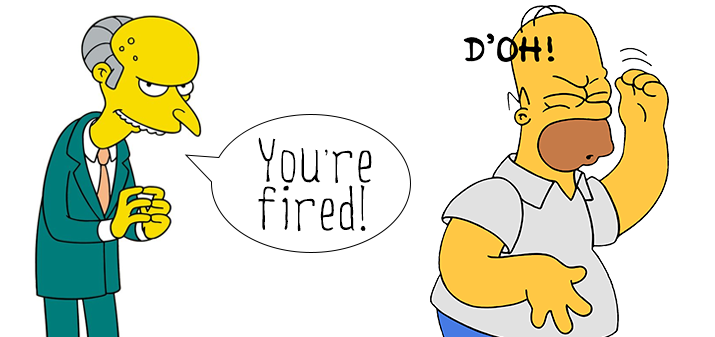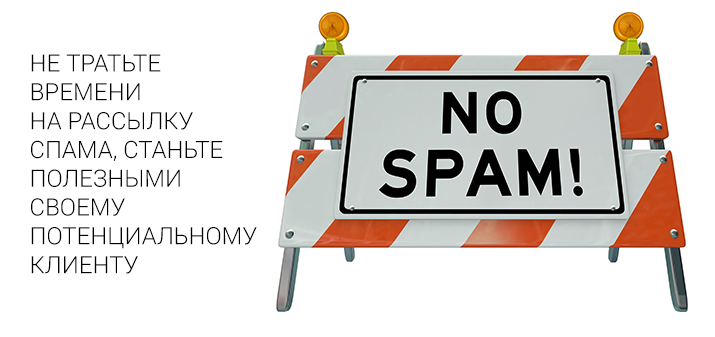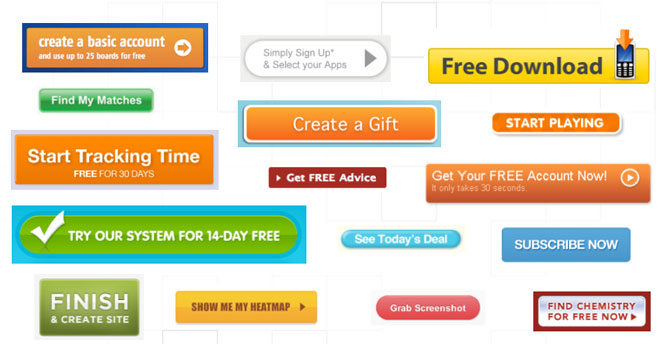21 Common Email Marketer Mistakes

Despite the abundance of information about the correct construction of an email marketing strategy, experts make a lot of mistakes, sometimes very rude and unacceptable. And it's not about spelling errors from the first paragraph or placing the wrong graph to the thesis. Here we are talking about seemingly minor errors. The ones you don't notice right away. The result is a loss of precious leads.
Below is a list of egregious mistakes marketers make.
1. Headline re-evaluation

Very often you can see "tricky", too tricky headlines. In fact, this is a real art - to write a headline "to the point."
As an example, consider the news portal BuzzFeed, where the headlines are not always honest in an attempt to lure the reader. But his trust is not unlimited. A person who opens such an email several times and does not see what the headline implied will lose confidence in the brand.
E-mail is sometimes inundated with spam emails in which the headers are so similar to each other. In all, a challenge is visible, sometimes even aggression. The user is so “fed up” with such masterpieces that with one kind of headline that so persistently lures to open the letter, but at the same time does not carry a semantic load (and this may not be a spam mailing at all, but information about something important and interesting) , there is an irresistible desire to delete it (at least throw it in "Spam").
Of course, you need to get the reader to open the letter. Just think of the price you will pay. It’s better to lose a couple of clicks, but save your reputation.
The editor-in-chief of that very BuzzFeed commented on such situations, saying that everyone can play with headlines. Once a mailing list was made with the defiant headline "Hello, you're fired." In the letter itself, a video was attached, where people “screwed up” something at work.
This mailing was the most effective in terms of the number of openings of the letter. And yet, since the work between the marketer and the mailing manager is based on trust, so as not to undermine the company's reputation, the approach has been changed. Now the BuzzFeed team is focused on the needs of its readers and is ready to delight them with every letter. But this is a solid foundation for a strong and long-term relationship with the reader.
2. Preheader or email preview
Many email clients are only able to display a small preview, usually no more than 100 characters. It consists, as a rule, of the first two lines of the letter from the mailing list. Here are a couple of tools to help you with the Preheader
- MailChimp - allows you to replace the template text with your own.
- ExactTarget , with its built-in formatting system, has a small bug that prevents text previews from being placed for almost all email clients. But there are craftsmen who cope with such a disaster by creating some kind of "crutches" to solve this problem.
Preheader is able to increase the number of opens, if, of course, you can develop the topic within such a limited number of characters.
Christine Bond believes that when writing a letter for a mailing list, every little thing counts. Everything matters here: title, preview, sender's name, email address, and so on. Many do not pay due attention to such seemingly trifles, focusing only on the text of the letter. They forget the importance of previews in email newsletters.
The most terrible thing in such letters is when instead of Preheader there is text like “Read more”, “Expand the letter”, “To view the letter, click here” and similar masterpieces. Or the option is even worse: the letter is a picture, and in place of the preview is a piece of the page address or code.
The preheader is a powerful tool if you approach it wisely. It can add meaning to the title and help open the email. In our time, when the development of business on the Internet is in leaps and bounds, this is an important moment. Many companies use previews to personalize emails. Its presence is especially important for letters where short headers are used. You are given only a few seconds to interest a person. So why not use all possible tools for this?
3. Sender's address and name "No reply"
People want to communicate with the same people, not with robots. Therefore, it is not the best option in the “From” line to use “No reply” or “admin” instead of the name.
Joe Stich (marketer for a web application automation service) is confident that a company sending emails to a mailing list from such a mailbox makes it clear that it does not intend to communicate with recipients. Agree that by sending a newsletter to your clients (real or potential, it doesn’t matter), you have a wonderful opportunity to communicate directly with them and involve them in the process. But many companies to this day do not use this opportunity.
Joe Stitch claims that their team is open to their subscribers. They strive to be in touch and answer all those who are interested in any questions about the company, about using the service. Moreover, they encourage users to give feedback if they have problems using the service. All questions are forwarded to the support service managers. From there, return responses to the client are already coming.
If a person sees that there is a “live” connection with the support service, that they will answer all their questions, most likely, he will become your client. After all, we repeat once again: people want to communicate with the same people, and not with robots.
4. For the user, the newsletter is of no value

Mailing lists are simply teeming with letters that do not carry value for the reader. Everyone has about the same meaning: click here, go here and pay! Everything is simple and no worries.
Tip: do exactly the opposite. Write such an interesting letter that the person himself wants to open it, read it, and then share it. This will lead to the fact that your product will be used more and more often.
How much do you value the value of your newsletter, even considering the high probability that the recipient will never buy what is offered?
Blogger Luke Guy laments that often through mailing lists, companies try to make a cold sale. By sending a single letter, they sincerely expect that after such letters people will buy their product.
Beginners often make these mistakes, says Luke Gay.
This is how it should be. Human relationships are not built in one day and not at the first and only meeting. A lot of effort will have to be made to establish communication with the client. Don't waste your time on spamming, be useful to your potential client. Do not offer yourself in the letter, offer what the client needs. Thus, work on increasing the audience. This is the very useful content.
5. The focus of your newsletter should be on the customer, not the product.
Matthew Smith (Really Good Emails - blog creator) argues that email is meant to serve the customer, not the product or service. Very often, the work on the campaign is handed over to the marketing team. The main goal of the team is development and growth. Unfortunately, marketers often take the task literally, forgetting that the steady growth of the company's popularity arises in the process of constant service to customers. It should be of such high quality that over time people want to share information about you with others.
Organize regular meetings with clients in mailboxes (not to be confused with frequent ones). Look one step ahead. Give subscribers more than they expect from you.
6. Faceless emails
Another big marketing mistake. They seem to be squeezed into the framework of formalities and write in standard, hackneyed phrases. In other words, one gets the impression that it was not a living person who wrote, but a machine.
Think about it, because the client did not just subscribe to your mailing list. Perhaps he was interested in the manner in which information is presented, how you present things or your point of view. Do not try to push your individuality somewhere into the far corner. Open up, show yourself.
Don't forget social cues too. This is also an important approach in marketing. And in email marketing as well.
An excellent example of excellent work in this direction is Anand Saval (CB Insights), who shares the most interesting news. He asks subscribers to write to him personally about their opinion. Anand Saval also shares the most interesting things that happen in his life, product users and in the life of his company.
What about the mailing list from Spitfire Athlete? They found their way. The newsletters tell the stories of famous partner athletes. Such letters are designed to inspire people to go to their goal and achieve it.
7. There are too many calls to action in one email.

Here, experts as one say that:
- Because of the desire to cram everything into one letter, a glut of information is obtained. It's wrong to have 20 calls to action, 10 flashing buttons, and 10 more links to different sites in an email. While a person “digests” such a flow of information, he will forget why he came. Ideally, one email should contain one call to action and one link.
- Often, the purpose of the mailing itself, a clear call to action, is not visible in mailing lists. A marketer sees email marketing and letter writing as something that just has to be done. However, he does not think about the ultimate goal of the letter.
- Also, along with the previous point, the inability to clearly convey what you want from the user. If your goal is, for example, to register or go to the site, make sure you provide all the necessary information so that it is clear what needs to be done.
8. No text link in email
People still value text links today. Place them like this: one at the beginning of the letter, the second at the end. And be sure to separate line.
9. Very long letters

Yes, this happens often. Marketers spend a huge amount of their time writing canvases of emails with tons of topics, news, and different ideas. Such creations require 10 minutes of deep and thoughtful reading from the recipient. Firstly, large emails destroy your motivation, and secondly, the current user does not like to spend a lot of time reading emails. There is a chance that it will not be read to the end.
Write short and clear letters. Save the user from reading a 3-page narrative. After choosing the main goal, write an interesting, motivating letter. And, most importantly, a person from the first seconds must understand what they want from him.
Newsletter Compilation: List of Errors
10. Ignorance of the principles of personalization
A common mistake that is observed in letters is ignorance of the principles of personalization. One of the worst mistakes is leaving a tag for personalization in a letter.
Of course, people understand that in the vast majority of cases, mailing letters are sent by a robot. But anyway. Such a mistake can undermine the reader's trust in you.
Any more or less decent email personalization tool can handle correct name substitution in messages. So the risk in this case can be expensive.
11. The “body” of the letter is solid pictures
A large number of pictures in one letter is very undesirable. And that's why:
As a rule, pictures are not optimized for mobile versions.
If the recipient's settings are marked "do not display pictures", he will not see them.
The user does not always realize that by clicking on the picture, you can go to the offer page.
The letter turns out to be “heavy” due to the large number of pictures. It is highly likely that it will "fall" into the Spam folder.
12. The complete absence of pictures in the letter
People don't read solid text well. Spice it up with pictures. But don't overdo it. As split-tests show, a person is much more willing to click on images than on text links.
13. The Underestimated Power of Plain Text
And yet, many marketers underestimate the power of regular text content in an email. Of course, a beautiful design plus a product announcement can increase conversions. But do not underestimate the text format. Many experts advise using it in the first, welcome letter. And preferably from a real employee from your team.
14. Lack of mailing regularity
It is important to work systematically here. A couple of times a week is enough, most importantly, do not miss it. Submit every week.
15. Wrong email frequency

This is one of the most common mistakes. In 2013, studies were conducted that showed that only 44% of users are satisfied with the number of letters received by e-mail. This problem is solved:
- You can create a small survey (during the subscription, you can later) among your subscribers. Find out what frequency of mailings would suit them. When the information is received, subscribers can be segmented, taking into account their wishes.
- You can periodically poll your subscribers in order to get to know them better.
Whatever tactic you choose, remember to consider what your followers want first. Only then can you reduce the unsubscribe rate and increase the open rate of your mailings.
16. Contradiction of messages in letters
There are situations of this kind: letters from the same sender come to the mailbox, but with conflicting sentences. For example, messages about the sale of the same product, but at different discounts, may come. Naturally, the user is lost in such a situation and, most likely, it will be easier for him to unsubscribe from the newsletters of this company, so as not to fall into a stupor from such offers in the future.
Conclusion: write letters based on the interests of subscribers, and not your business goals.
17. Ineffective mailings

And such situations are among the most stupid: hotels send letters about promotions taking place in the area where this hotel is located. Do they sincerely hope that the person will respond to the offer?
18. Rare mailings or their complete absence
A big mistake is to collect a subscriber base and delay the mailing.
One of the founders and director of Zapier, Wade Foster, told how their company once made a mistake and did not launch the newsletter on time. After a fairly long time, it was finally done, but in the letter, apart from the news about the launch of the project, there was nothing.
In such situations, it is imperative to give subscribers “food”, find interesting, engaging topics, keep up to date with news, and so on. But in no case do not delay the process of starting sending letters.
19. Sending promotional offers to non-target audience (or those who do not need it)
Many companies carry out regular mailing, despite the fact that a person does not even open their letters. Over time, the email client of such recipients, having assessed the low percentage of opening of your letters, can send them to the Spam folder.
To avoid this, research your open rates and don't send emails to people who don't need it.
20. Non-segmented database of addresses
Many marketers ignore the process of segmenting the address base. This is very important, especially if, for example, you provide any tips for dummies, intermediates and pros. Agree, you can not equal such users. This means that the information that you are going to send should correspond to the level of your subscriber.
It is also useful for marketers to consider how long a person has been with the company when conducting surveys.
First, it will show the subscriber that you are interested in his opinion. Secondly, you will be able to assess how well you work and, perhaps, see “gaps” in your work.
21. Lack of analysis of user actions

A very common mistake. Many email marketers carry out mailings “blindly”, without analyzing user actions. If the user does not show activity in any way, you need to “hook” him, push him to actions, return him back. Send active user emails with new products, motivate him to interact with you even more. Targeted mailings have tremendous power if they are based on analysis.
If for some reason you are not able to track user behavior, this can be done through the mailing client.
Here are some solutions:
- send a few welcome emails using content you think the person will definitely be interested in;
- find those who consistently open your emails, who respond to calls to action, and so on. Invite them to learn about the news before others, send VIP content to such subscribers.
- Before sending a newsletter, analyze user behavior. If, for example, a person was looking for information to download on your site, send it in an email. Then surely he will open the letter.
The worst mistake
And in conclusion, I would like to point out the worst mistake of email marketers: the requirement for authorization when trying to unsubscribe from the mailing list. Such senders are usually sent to Spam.
